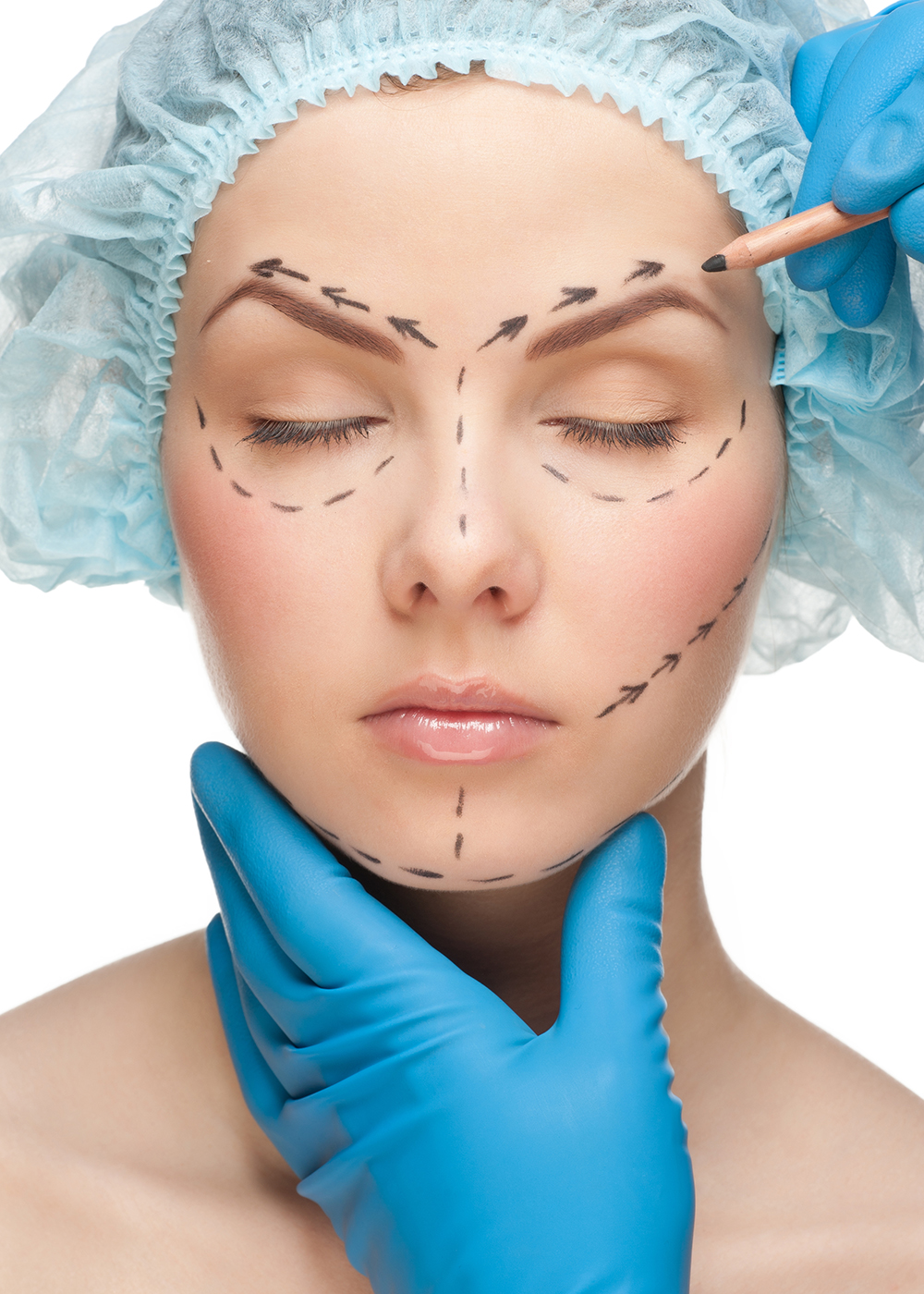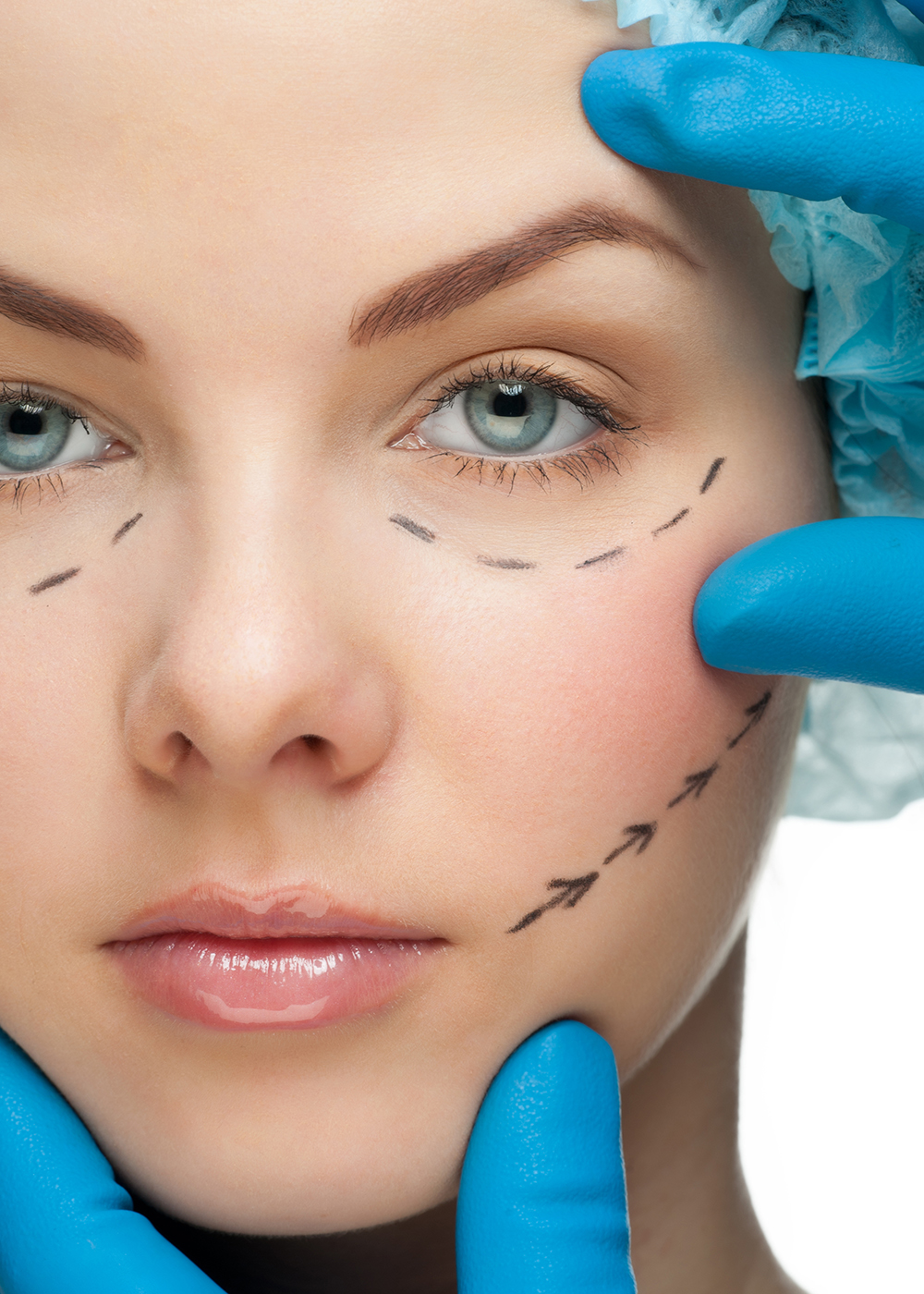Be sure to ask your plastic surgeon questions. It’s natural to feel some anxiety, whether it’s excitement for your anticipated new look or a bit of preoperative stress. Don’t be shy about discussing these feelings with your plastic surgeon.
Facelift procedure steps
A facelift procedure includes the following steps:
Step 1 – Anesthesia
Medications are administered for your comfort during the surgical procedure. The choices include intravenous sedation and general anesthesia. Your doctor will recommend the best choice for you.
A variety of other procedures can further enhance the outcome of a facelift. They include:
- Facial implants or fat transfer
- Soft tissue augmentation to recontour the facial structure
- Resurfacing techniques to improve the tone and texture of facial skin
- Wrinkle reduction by injection of fat or fillers
Step 2 – The incision
Depending on the degree of change you’d like to see, your facelift choices include a traditional facelift, limited incision facelift or a neck lift.
A traditional facelift incision often begins in the hairline at the temples, continues around the ear and ends in the lower scalp. Fat may be sculpted or redistributed from the face, jowls and neck, and underlying tissue is repositioned, commonly the deeper layers of the face and the muscles are also lifted. Skin is redraped over the uplifted contours and excess skin is trimmed away.
A second incision under the chin may be necessary to further improve an aging neck. Sutures or skin adhesives close the incisions.
Traditional Facelift
An alternative to a traditional facelift uses shorter incisions at the temples, continuing around the ear and possibly within the lower eyelids or under the upper lip.
Limited Incision
Sagging jowls, loose neck skin and fat accumulation under the chin may be corrected with a neck lift. The neck lift incision often begins in front of the ear lobe and wraps around behind the ear ending in the lower scalp.
Step 3 – Closing the incisions
Once healed, the incision lines from a facelift are well concealed within the hairline and in the natural contours of the face and ear.
Step 4 – See the results
The visible improvements of a facelift appear as swelling and bruising subside. Your final result should not only restore a more youthful and rested appearance, but also help you feel more confident about yourself.
Facelift recovery
During your facelift recovery, a bandage might be placed around your face to minimize swelling and bruising once your procedure is completed. Thin tubes may be present to drain any excess blood or fluid that may collect under the skin.
You will be given specific instructions that may include how to care for the surgical site and drains, medications to apply or take orally to aid healing and reduce the potential for infection, specific concerns to look for at the surgical site or in your general health, and when to follow up with your plastic surgeon.
Be sure to ask your plastic surgeon specific questions about what you can expect during your individual recovery period.
- Where will I be taken after my surgery is complete?
- What medication will I be given or prescribed after surgery?
- Will I have dressings/bandages after surgery?
- When will they be removed?
- Are stitches removed? When?
- When can I wear make-up?
- When can I resume normal activity and exercise?
- When can I see my stylist for hair color and cut?



